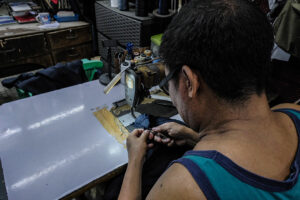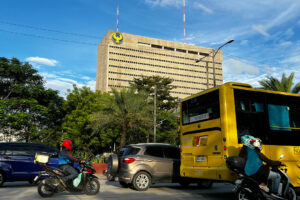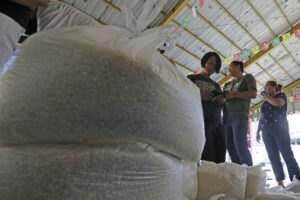IN A PREVIOUS ARTICLE (https://tinyurl.com/2xp6ug29), we argued that manufacturing and exports are the “magic bullet” that developing countries like the Philippines need. We are not unveiling here anything new: nihil novum sub sole. This is how countries have managed to overcome the middle-income trap, then become upper-middle- then high-income countries.
But if the way forward is clear, why is it so difficult to get it right? Here comes to our mind the start of Leo Tolstoy’s famous novel, Anna Karenina: “Happy families are all alike; every unhappy family is unhappy in its own way.” Whereas successful industrialization stories are very similar in their core elements, every developing country has its own set of historical and current obstacles for development.
The Philippines has its own unhappy story. Despite the significant progress in the last decades, its gross national income per capita is still very low, not even $4,000. It is low because wages are low. This is the result of policy mistakes, in the form of not doing what our neighbors did decades ago: industrialize and export. This is also what catapulted China, and more recently, Vietnam. Of course, firms were the ones that ultimately invested in manufacturing and produced goods to export, but the government pushed them in that direction.
We shall not forget that China and Vietnam were not blessed with better “cards” than the Philippines, both in economic and political terms. In 1962, China’s gross national income per capita was less than one third that of the Philippines. China’s economic miracle is well known. Between 1980 and 2010, GDP growth averaged 10% year-on-year, which is by all means extraordinary. This “big push” made it possible for China to match the Philippines gross national income per capita in 2003 — not so long ago. Today, it is over three times that of the Philippines’ ($12,850 in 2022).
Let us look at Vietnam, a much closer success story. Its gross national income per capita was just a meagre 13% of the Philippines’ in 1991. It recently surpassed the Philippines, and in 2022 its income per capita stood at $4,010, 2022. Such a large change in just 30 years is even more remarkable.
How were these two very poor countries — at that time — able to catch up and even surpass the Philippines? How was this possible, especially since the Philippine economy has been registering uninterrupted growth since the 2000s (except for 2020)? We cannot but recall here the understandable reaction of a prominent Filipino politician to this bitter reality: “bobo ba tayo na tatalunin tayo ng lahat, ha?” (Are we so dumb that everyone will beat us, huh?). The difference is not that workers in nations on the other side of the West Philippine Sea are more hard working. It is about a clear public focus and ambition on manufacturing and ultimately exports.
A key difference between the Philippine government and the governments of its neighbors has been the former’s weakness when it comes to directing the private sector to do what is good for the nation.
To understand this, let’s recall The Bell Act of 1947 which rehabilitated the sugar industry and provided the free entry of American products into the Philippines. These made it difficult to develop national industries and, more generally, a manufacturing sector. It can be said that the Philippines’ history after independence is a case of a country that developed “extractive” institutions and was dominated by a landed oligarchy of great families who fought for economic and political power and took over the House of Representatives, Senate, and other important political positions. This has been so since the first Constitution in 1898. This, naturally, led to a weak state. Government capture (powerful landowners are congressmen) prevented change. Countries like the Philippines have developed self-reinforcing mechanisms that perpetuate socially suboptimal institutions. Some initial adopters chose these institutions at some point in the past because they suited their interests, but then the whole system became “locked in.”
One may wonder why these institutions have not changed. The answer would seem to be that powerful vested interests make institutional change politically difficult in terms of distributive conflicts and asymmetries in bargaining power. The tenacity of vested interests, the difficulty of mobilizing collective action to bring about institutional change, and the differential capacity of different social groups for mobilization and coordination are long-lasting barriers to economic progress.
The wealth of politicians derived for a long time from agricultural land. While this is still important, its role has declined as landowners moved to commercial, real estate, or industrial enterprises. This led to a shift during the 1990s from a rentier mentality of the rural agrarian elites to a more urban-based entrepreneurial and competitive mindset. Today, it must be said, the Philippines is more open to competition and to new entrants than agricultural landowners ever were.
To understand the difference between the private sectors and the states of the more successful Asian economies and those of the Philippines, it is important to appreciate the role of rents, i.e., returns over and beyond the economic opportunity earnings, such as extra earnings obtained from enjoying a favorable location, created out of state intervention operating through social processes of political positioning. Given that the successful Asian governments intervened much more than that of the Philippines, it follows that these other economies created more rents as a share of GDP. The difference lies in how rents were used and the type of firms that dominate in each type of economy.
While the successful Asian countries had profit-seeking firms that operated in a more or less competitive atmosphere and were driven to innovate to lower costs, the Philippines was dominated by a few large firms that lived on capturing rents through political influence and then applied those rents to retain or expand their standing. The same economic elite that preached the paramount benefits of liberalism and no public interventionism flourished thanks to monopolistic structures protected from competition, domestic and foreign. The state was not powerful enough to either turn their investments to contribute to the social interest or to intervene to open the market to other firms.
Today, the large firms thrive in the non-tradable sectors of the economy (real estate, banking, tollways and airports, telecom, energy, malls, etc.), do not export and hence do not compete in the world economy. They are convinced that they contribute to the nation’s development as they associate their businesses with the idea of development. This is a self-serving statement that shows that they have little understanding of what “development” is really about.
We are convinced that firms — especially the big conglomerates — are called to be essential characters in a successful development story, but they cannot replace the protagonist, which is the State. There is a widespread ardent belief among the business elite about what we may call “market-driven development,” which actually means minimal public intervention in the economy. Looking again toward China and Vietnam, while embracing a market economy was absolutely necessary for their development, the State remained strong and held the reins of the economy, as in any advanced economy in the world. Firms cannot be game-changers, they are (only) players.
Sadly, all this has led us to a piecemeal development model according to which things are fine because the labor force is still growing (and it will continue growing for some time), several million workers send remittances, and tourism is the future. This is an anti-development strategy. We doubt it will take us to a high income in the coming decades.
The Philippines desperately needs firms that manufacture (the main source of productivity growth) and export (learn and compete). The country has hardly industrialized. The share of manufacturing employment in total employment is very low, less than 10% (although the number of workers in manufacturing is increasing), and we are not a powerhouse exporter. The sad reality is that we do not have firms that manufacture, export, and compete in world markets.
Manufactures and exports are the magic bullets that will trigger the investment that the country needs, both firm-specific equipment and large-scale infrastructure. Reforms that do not focus on these two tickets should not be a priority because they will not deliver what this country needs the most: a significant economic transformation that produces higher wages.
Jesus Felipe is distinguished professor of Economics, De La Salle University while Pedro Pascual is a board-certified economist with Spain’s Ministry of Economy and a Partner at MC Spencer (Philippines).





